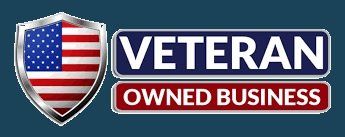- Home
- About
- Services
- Fractional CMO
- Branding
- Websites
- Strategies and Tactics
- Research
- Focus Groups
- Search Engine Optimization (SEO)
- Blogging
- Pay Per Click
- Social Media
- Video Production and Editing
- Radio
- Books and Brochures
- Citations
- Billboards
- Print Advertising
- Link Building
- Press Releases
- Events
- Reviews and Assessments
- Business Plans
- Budgets and Forecasts
- Political Campaigns
- Contact
Link Building
Link Building
Remember the research papers you had to write in high school and college?
In the days before the internet became the powerful tool it is today, students went to a library to collect information for their research papers.
If you are over the age of 35, you probably logged countless hours at a library flipping through card catalogues and wandering the aisles scanning where the Dewey Decimal System placed the books you needed. You went to the library because that’s where the information was located.
You found thousands and thousands of books, magazines, newspapers, pamphlets and film produced and written from authors from all over the world. You used that information to support statements, theories and conclusions you wrote about in your research papers. To properly write a research paper, you included footnotes and a reference section at the end of the paper.
If that library was a website, all the various footnotes and references that were included in all the research papers written by every student who used that library for sources of information would be considered in-bounds links. You want your website to become that library.
In-bound links tell search engines the information found on your website is important. You’re the library that everyone goes to. In-bound links help your website build the powerful mix of relevance and authority that’s needed to rank high on internet search engines.
Quality is More Important than Quantity
There was a time when the volume of in-bound links to a website was very important to rank high on search engines. Over the years, webmasters (people who oversee the performance of a website) used tactics to generate as many in-bound links to the website as possible regardless as to whether those in-bound links came from credible sources or not. That’s not the case anymore. Now, the mere volume of in-bound links to a website is not as important as the over-all quality of the in-bound links.
How Do You Get High Quality In-Bound Links?
Generating high quality in-bound links takes a multi-faceted approach.
First and foremost is the need to produce content on your website that is original, meaningful and interesting. That includes written content, videos, photography and blog articles. Over time, the quality of your content will get noticed if you promote and advertise it properly. When it does get noticed, other users of the very powerful tool we call the internet will link to your website and create in-bound links.
Write blog articles for others to publish on their blogs and/or websites that have links to your website.
Establishing local business accounts on internet search engines and creating citations on internet directory websites all offer you opportunities to create in-bound links to your website. We will cover search engine local business accounts and internet directory websites in the chapters that follow.
Write press releases about your business and publish them on a variety of press release websites and newspaper websites. When you publish press releases on-line, you will usually have an opportunity to link to your website.
Produce videos and publish the videos on the many video internet sites like YouTube. When you upload a video to YouTube, you have an opportunity to insert a link to your website in the video’s description.
Take great photos and share the photos on-line. When someone uses one of your photos, make sure you require them to add a link back to your website in the photo.
Constantly be on the look-out for opportunities to generate in-bound links. The internet is an ever-changing environment. New tools for creating quality in-bound links are certain to be on the horizon. Remember, quality is what matters most.
Outbound Links
It’s also beneficial for you to be generating high-quality out-bound links. When writing new pages and blog articles, be sure to include at least one outbound link to a credible and relevant website.
Both in-bound links and out-bound links are very important ingredients for success. Remember to avoid linking tactics that try to play games with the search engines. That will harm your website in the long run. Creating high-quality in-bound and out-bound links that are relevant to your business is the strategy that works.
Contact us to learn more about how we can help you develop and implement a linking strategy that works for yourl business.
MQBC and MQBC Websites
846 Bright Rd.
Findlay, Ohio 45840
Call or Text : 419-890-5106
tom@marketingqbc.com
Business Hours
- Mon - Fri
- -
- Saturday
- -
- Sunday
- Closed

